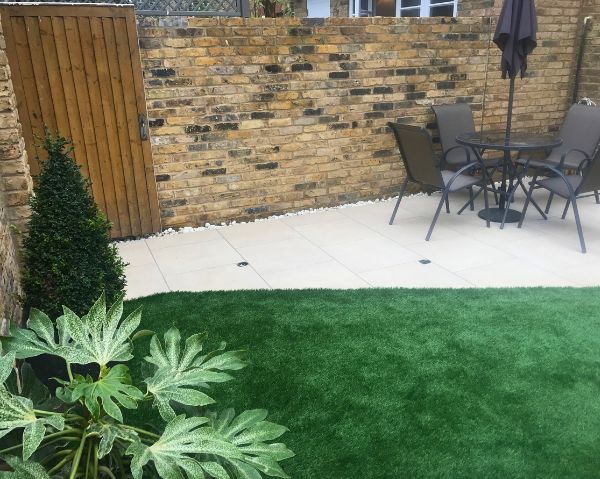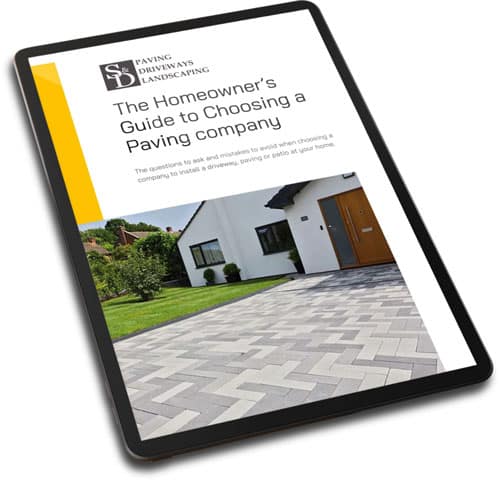How To Create A Low-Maintenance Garden
Low-maintenance gardens are increasingly popular these days, as many homeowners seek a simpler alternative to traditional landscaping. Creating a low-maintenance garden allows you to experience the benefits of being outdoors and having a beautiful landscape without all the usual effort required.
Garden maintenance is not just a one-time job, but an ongoing commitment that many busy homeowners cannot afford. Whenever you do have a spare moment, you don’t want to have to deal with yet more work, which is why low-maintenance gardens are so beneficial.
In this post, leading landscapers S&D Paving are sharing some of the best ways you can create a low-maintenance garden to save time and money this summer.
What Is A Low-Maintenance Garden And Why Is It A Good Choice For Me?
Low-maintenance gardens can offer a range of benefits to busy homeowners, which is why they continue to be such a popular option. When renovating your outdoor space, you want to consider the long-term appeal, and with a low-maintenance garden, this is easy to ensure.
These landscapes are specifically designed to be easy to care for, requiring less work than traditional outdoor spaces to keep in good condition. In terms of both their appearance and health, low-maintenance gardens remain consistent throughout the year and will thrive with little to no effort from you.
Some of the top benefits of these kinds of outdoor spaces include:
- Saves Time: The main benefit of low-maintenance gardens is the fact they save time. They do not require ongoing work to maintain their appearance and health, so you can free up time in your schedule, which can be used to enjoy the garden and spend quality time with loved ones outdoors.
- Cost-Effective: As they do not require ongoing gardening, such as mowing, feeding, or pruning, low-maintenance landscapes can help save money. You do not need to invest in gardening tools to maintain these gardens, nor have to rely on professional help to keep them looking good.
- Environmentally-Friendly: Low-maintenance gardens save water and do not rely on chemical treatments, such as fertilisers, like traditional outdoor spaces. This makes them an ideal solution for sustainable homeowners and those who want to reduce their impact on the planet without affecting their lifestyle.
When designed well, low-maintenance gardens can offer a variety of these benefits and continue to be a source of pride for homeowners.
How To Design A Low-Maintenance Garden: Top Tips
Now that you understand the benefits of low-maintenance landscapes, it is time to consider creating one of your own. There are various ways you can make your garden more low-maintenance, such as:
Low-Maintenance Plants
Plants can require a lot of work to keep them looking great and ensure they thrive throughout the seasons, which is why low-maintenance gardens feature less and instead opt for simple alternatives.
When designing your low-maintenance garden, you need to carefully plan your planting areas and choose specific features that require little watering, weeding and fertilising, such as:
- Drought-Tolerant Plants: Species such as lavender, sedum and ornamental grasses are drought-tolerant, which means they can withstand dry, hot weather spells and require little to no watering throughout the year.
- Evergreen Shrubs: Plants such as yew and box hedges maintain their foliage all year round, providing structure and style to your outdoor space throughout the seasons.
- Native Plants: These plants are organically found in the region and therefore thrive in natural conditions of your garden, reducing the amount of support and maintenance required in wildflower and native planting spaces.
- Slow Growing Plants: Avoid annuals and fast-blooming flowers in your low-maintenance garden, and instead opt for slower life cycles as these require less pruning, shaping and will provide longer blooms to enjoy in your low-maintenance garden.
Remove Or Reduce Lawn Spaces
While lawns are the foundation of traditional outdoor spaces, they require a lot of work to keep them looking great. To ensure that grass remains lush and green all year round, you need to constantly perform lawn mowing, feeding, and watering, which many homeowners may not be able to afford.
This is why many low-maintenance gardens reduce the lawn space, and some landscapes completely replace this area with something new. Instead of having traditional grass in your garden, you can replace this main area of the garden with hardscaping, such as a porcelain or gravel patio, or use ground cover plants.
Low-growing ground covers, such as creeping thyme and ajuga, can be a great alternative to traditional lawns in low-maintenance gardens. These plants still provide the greenery you may desire in your garden, and the contrast between soft and hard landscaping, but do not require ongoing mowing or pruning. They can also offer additional benefits for low-maintenance gardens, such as suppressing weeds and retaining moisture.
Alternatively, those who still want a lawn but do not want to work for it could consider artificial grass. These turfs remain green and lush all year long, but do not grow; therefore, no mowing or gardening is needed. Some simple cleaning and sweeping is often all that is required throughout the seasons to keep artificial turf looking great.
Quality Hardscaping For Zoning And Access
As we have mentioned, hardscaping can be a great way to reduce the maintenance needed in your garden because it reduces planting areas. To ensure that your outdoor space is long-lasting and attractive, you need to carefully consider the hardscaping materials used throughout.
Hardscaping features, such as decking, paving and patios, can be a great way to create a low-maintenance garden. Used to replace or reduce lawn areas, hardscaping makes your garden accessible and suitable for all-weather use. With contrasting materials and complementary colours, hardscaping does not have to be boring and can be a stunning feature in your landscape.
Some of the best materials for your low-maintenance garden include:
- Porcelain Paving: Ideal for contemporary garden design, porcelain is a stunning, hard-wearing material that can make sleek patios and pathways. It is a great foundation for outdoor entertainment areas and is suitable for all-weather use.
- Composite Decking: This can provide the same appearance as traditional timber but without the maintenance, such as staining and repairs. It is a sustainable alternative and a great solution for modern outdoor spaces, because composite can come in various colours.
- Stone Pathways: For a more rustic appearance to your low-maintenance garden, stone paving slabs are a great solution. They are hard-wearing and designed to last a long time, with various customisations in colour, shape and texture.
Water-Wise Garden Features
One of the biggest tasks in traditional gardens is watering. Watering is needed to keep all forms of soft landscaping attractive and healthy throughout the year, and should be done regularly. This is not only time-consuming but can be expensive, as excessive water use will increase your bills. It can also hinder the planet and is a major concern for sustainable homeowners
There are various ways you can make watering your garden easier and reduce the amount of time this task takes with features like:
- Irrigation Systems: Drip irrigation systems are a great solution for low-maintenance gardens because they provide precise watering directly to the roots of your plants. They essentially do the hard work for you and ensure that plants are receiving the right amount of hydration to save time and effort.
- Rainwater Collection: Instead of investing in watering systems and hosepipes, you can use water butts to collect rainwater, which can later be used to hydrate your landscape. Ideal for lawn spaces and flower beds, rainwater is a sustainable alternative and a cheaper way to keep your garden healthy throughout the year.
- Mulching: Apply a layer of organic mulch, such as wood chips or compost, to your flower beds and planting areas to retain moisture. This can reduce the need for watering, as well as provide essential nutrients to your plants for better growth without the effort.
Conclusion
There are many benefits to a low-maintenance garden, and creating one can be easily done with the right tools. By carefully choosing hardscaping materials and hardy plants, you can reduce the need for gardening and free up some time in your schedule. By reducing the need for gardening tasks such as watering, mowing and pruning, you can have more time to enjoy your outdoor space throughout the seasons.
S&D Paving is a leading landscaping company that has helped many homeowners create low-maintenance gardens over the years. We know this is a popular request for modern households and helps many clients achieve their ideal gardens through our professional services.
Contact Us Today
To learn more about our services or request a quote, please contact the team today.
FAQs
What is a low-maintenance garden?
A low-maintenance garden is a space that requires minimal upkeep, such as less frequent watering, mowing, pruning, and feeding. This is provided through smart planting and material choices.
Is gravel a good option for a low-maintenance garden?
Gravel can be a great option for low-maintenance gardens because it suppresses weeds, improves drainage, and can replace lawn areas.
Can a low-maintenance garden still support wildlife?
Yes! Use native plants, include a water source, and involve slow-growing pollinator plants to create a low-maintenance landscape that still supports wildlife.





